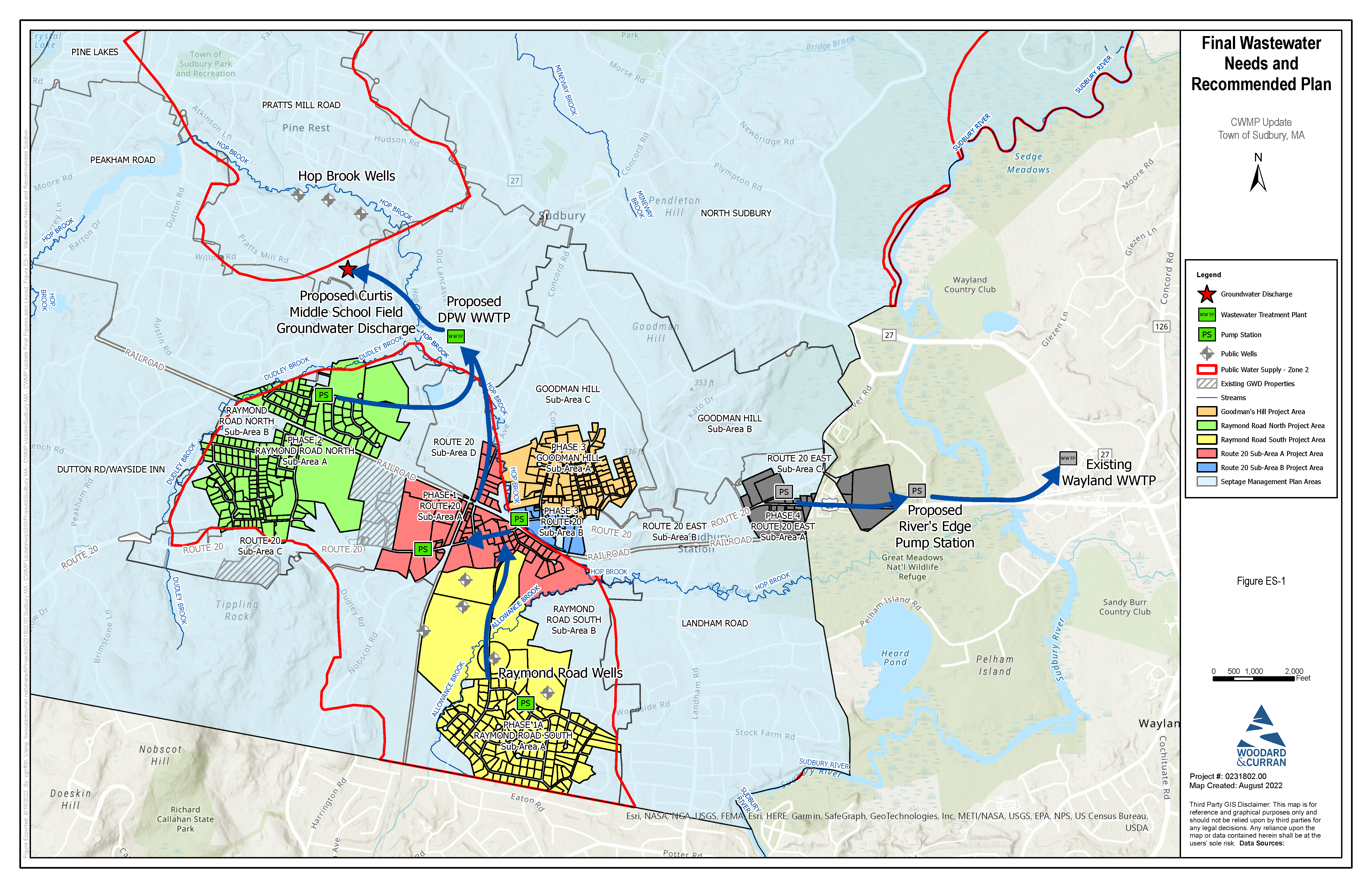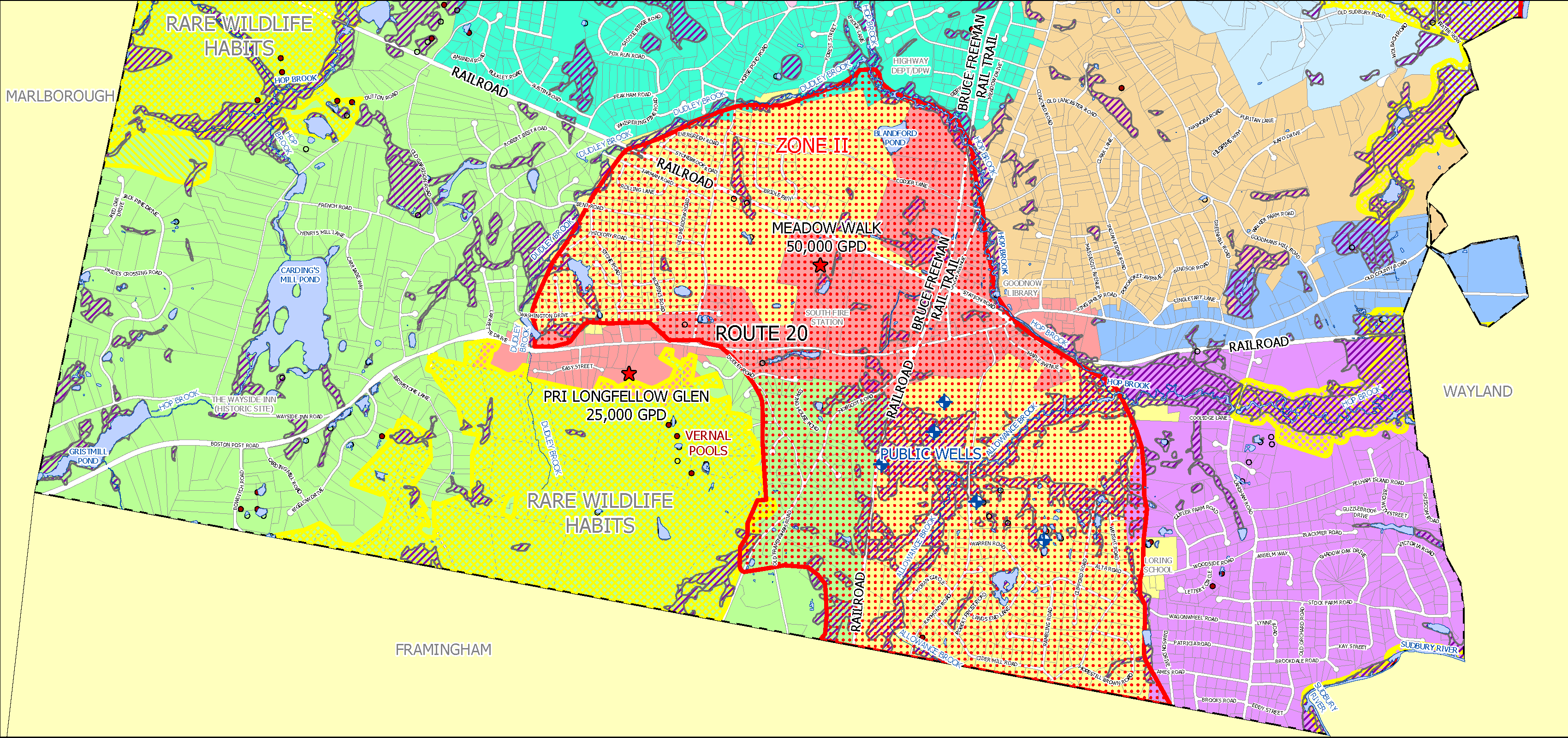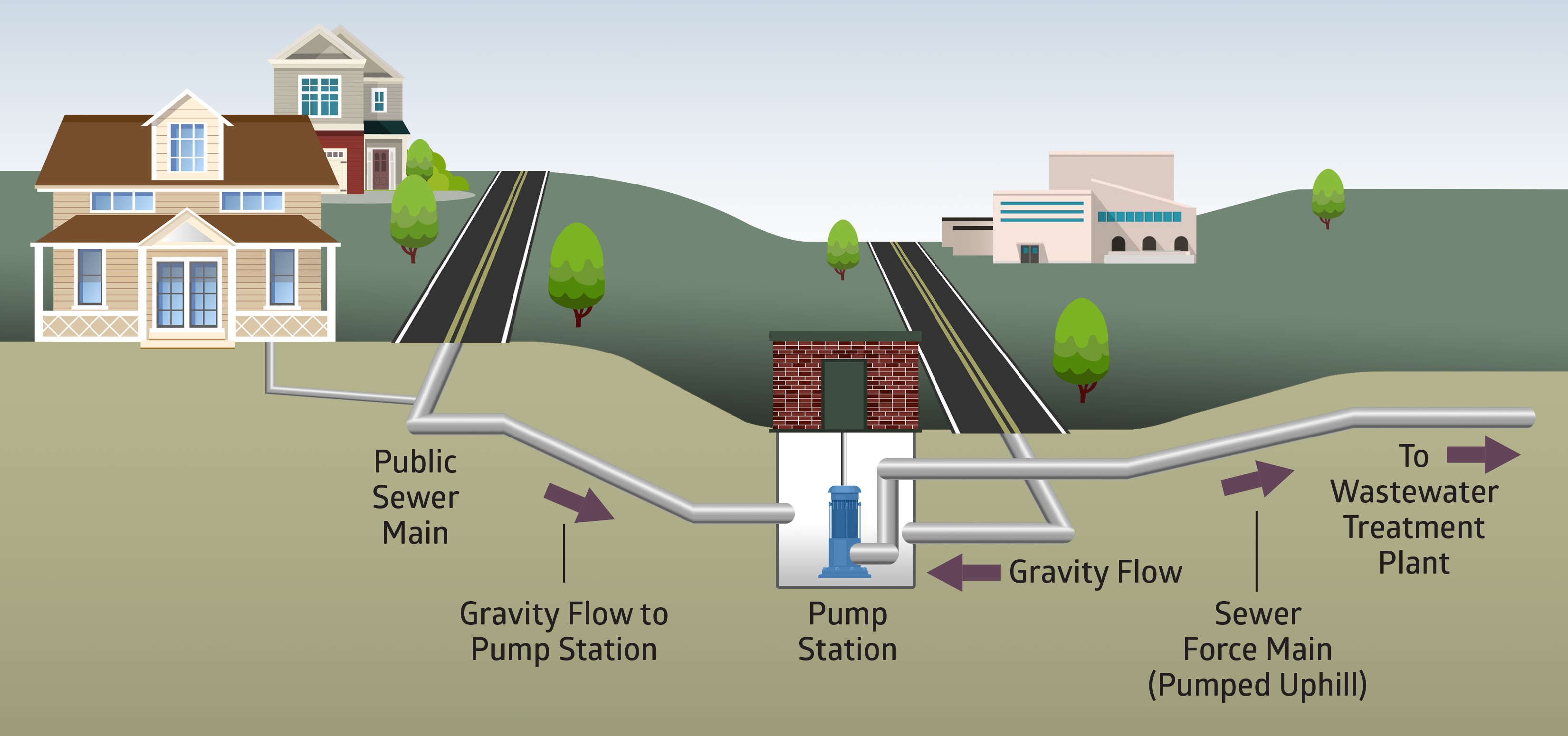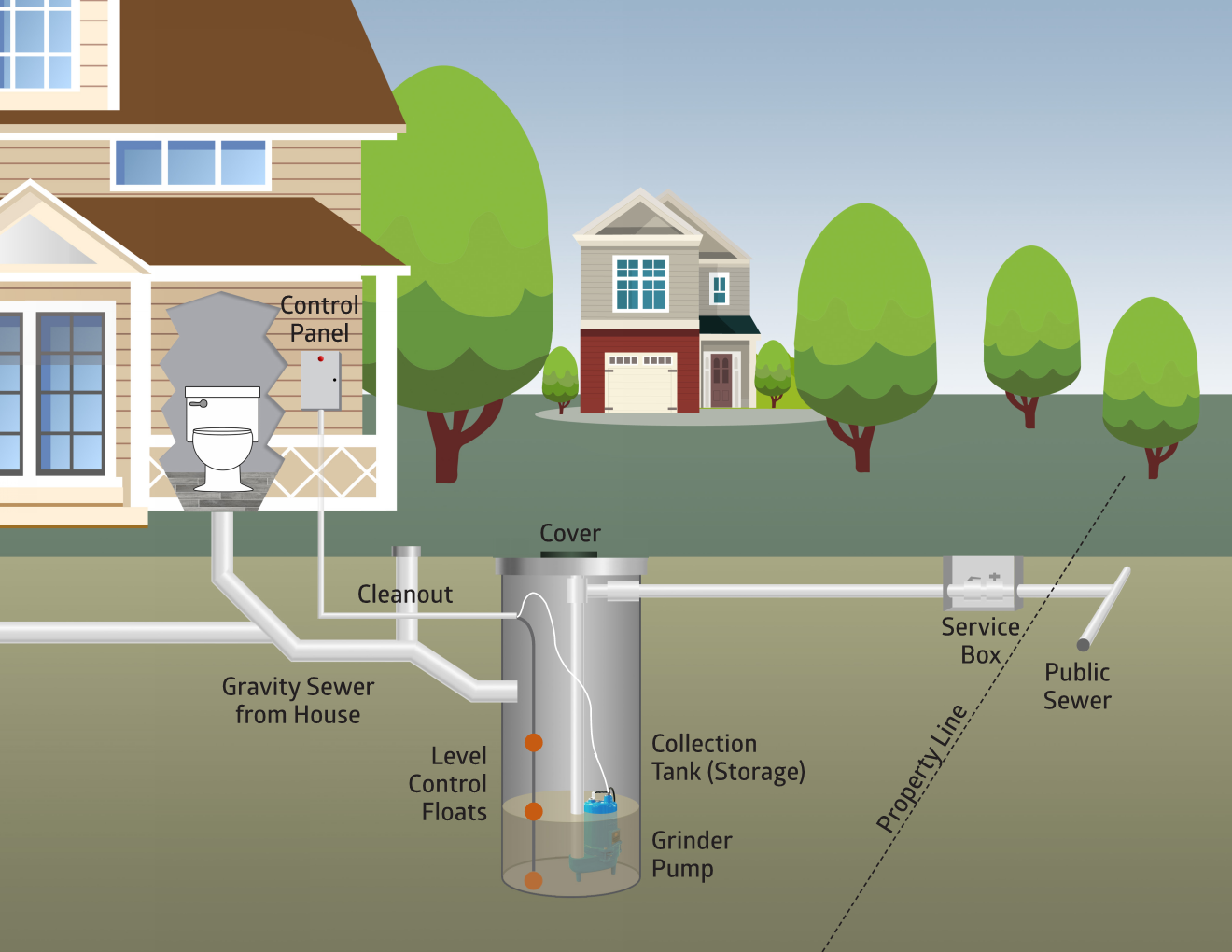Comprehensive Wastewater Management Plan (CWMP) Updates
Overview
Sudbury has been investigating wastewater options for the Route 20 Business District for decades. Septic systems continue to be an environmental concern due to the proximity of these on-site wastewater systems that discharge near the Town’s Municipal Water Supply wells located on Raymond Road, as well as a limiting factor to business expansion and/or actual relocation.
Public outreach efforts may be targeted for groups, such as businesses or neighborhoods that may be considered for public sewer. This website will serve as the centralized location for updated information pertaining to the project. Monthly updates will be published on this webpage regarding the status of work that has been completed, key decisions or milestones that have been reached, as well as highlight upcoming work/tasks in the pipeline. Outreach meetings and associated content can also be found here and via the Town’s general website. Woodard & Curran, Inc. was contracted by the Town in early 2020 to perform a Town-wide wastewater study called a Comprehensive Wastewater Management Plan (CWMP). This effort is in progress and will continue through late 2021.
Woodard & Curran is responsible for reviewing available wastewater needs, information including Health Department records, and zoning information to determine future uses. The first task is subdividing the Town into Study Areas in order to manage data sets within similar neighborhoods, zoning, and geographic areas for evaluation. This work then ultimately provides a basis to prioritize areas for the Town to identify the long-term sustainability of existing on-site wastewater systems (septic) or if an off-site wastewater solution better serves the identified need of environmental resource protection, drinking water protection and preservation, as well as the support of economic development in targeted areas zoned as such. In parallel to the engineering effort, Woodard & Curran, in conjunction with the Town, will be conducting a public outreach campaign in order to fully inform the general public of the work being performed and solicit input into future recommendations. In-person workshops and meetings are currently on temporary hold due to the pandemic, but alternate methods of outreach and education are being developed and will be utilized for outreach to the general public. We are monitoring current conditions and will revise and adapt as appropriate in order to keep the information flowing.
PREVIOUS PUBLIC OUTREACH MEETINGS
Events after July 12, 2022 are listed under the “Public Outreach & Events” on the Phase 1/1A Sewer Project Homepage.
- 2022 July 12th — Select Board Meeting | Video
- 2022 March 2nd — Chamber of Commerce Meeting | Photo
- 2022 February 9th — Select Board Meeting | Video
- 2022 February 7th — Sudbury Public Schools School Committee Meeting | Video
- 2022 February 3rd — Public Outreach Zoom Meeting | Video
- 2021 August 5th — Public Outreach Zoom Meeting | Video
- 2021 May 25th — Select Board Meeting | Video
- 2019 May 6th — Annual Town Meeting | Video
- 2019 March 27th — Planning Board Meeting | Video
- 2019 March 5th — Select Board / Finance Committee Joint Meeting | Video
- 2019 January 8th — Select Board Meeting | Video
▶ The Final CWMP Update is available.
CWMP FAQs
Click on this link (PDF) to view a downloadable form of frequently asked questions about the Comprehensive Wastewater Management Plan.
Feedback / Comments
We welcome your feedback and comments, and we encourage you to provide your thoughts to ensure the wastewater plan is tailored to fit Sudbury now and in the future. You may submit your feedback and questions via email:
Register for Project Updates:
Together we build a better plan!
Public Outreach Schedule
In-person meetings are currently on hold due to the current status of the COVID-19. All virtual meeting schedules and updates will be posted on this site.
Contact
-
Hours:
Monday - Friday
8:00 A.M. - 3:30 P.M. - Email: CWMP@sudbury.ma.us
- Phone: Dial Department of Public Works at (978) 440 - 5421
- Fax: (978) 440 - 5404
-
Building: Department of Public Works Building
275 Old Lancaster Road
Sudbury, MA 01776
Monthly Project Updates
Background & Supporting Information
- 2022 — CWMP Update (Final) and SEIR Report with Appendices (October)
- 2022 — Addendum to Environmental Notification Form Secretary’s Certificate (EENF) (April)
- 2022 — Addendum to Environmental Notification Form (EENF)
- 2021 — Expanded Environmental Notification Form (EENF)
- 2020 — (Ongoing) Sudbury Master Plan Baseline Report
- 2013 — (Revised) Project Evaluation Report (PER) by Weston & Sampson Engineers, Inc. (Evaluated Route 20 wastewater options)
- 2010 — Ponds and Waterways Committee Master Plan
- 2010 — Route 20 Business District Wastewater Management Plan Update — Weston & Sampson Engineers, Inc.
- 2004 — (Draft) Supplemental Nutrient Loading Evaluation of Hop Brook for MassDEP/USACOE by ENSR International. Document No. 09090-042a
- 2001 — Assessment of Wastewater Management Needs for the Route 20 Business District by Weston & Sampson Engineers, Inc.
- 1995 — Route 20 Wastewater Disposal Options
- 1994 — (Revised) Nitrogen Loading Analysis for Groundwater Supplies by H2O Engineering Consulting Associates, Inc.
- 1989 — Hop Brook Ponds System Study, Sudbury, Massachusetts by Whitman & Howard, Inc.
Educational Material
The goal of the CWMP is to provide wastewater management alternatives for those properties in need of solutions aside from onsite systems. In general, the following tools/options are commonly used and will likely become part of the recommendations of the proposed town-wide plan.
- Maintain Onsite Systems — Onsite sewage disposal systems most commonly consist of a septic tank where wastewater is partially treated and solids settle to the bottom of the tank. From the septic tank, the partially treated wastewater usually flows to a leaching field where it is dispersed across a larger area and slows percolates into the ground. Flow-through this moist (not saturated) area is critical to the final stage of treatment for an onsite system. Onsite systems are commonly referred to as Title 5 systems referencing their governing regulation: 310 CMR 15.000: Title 5 of the State Environmental Code. Homes constructed after 1996 are required to be built to the Title 5 standard and are Title 5 compliant. Passing a Title 5 test does not make your system Title 5 compliant, but merely implies that it appears to be functioning satisfactorily. Onsite systems may include a Septage Management Plan where there are maintenance requirements for homeowners where pumping septic tanks may be required annually or bi-annually.
- Innovative / Alternative Systems (I/A Systems) — These systems are located onsite, but include additional forms of treatment and are often associated with sites requiring multiple waivers or in environmentally regulated areas. I/A systems are mostly categorized as General Use (for new or existing construction) and Remedial Use (not for new construction). These systems can be passive or can include a more complex series of tanks with pumping steps, mixing, aeration systems, etc., which can be quite costly to construct and/or operate.
- Sewer System — A sewer system consists of infrastructure collecting sewage from multiple properties and conveying it to a common treatment location. These systems can be local such as a decentralized small Wastewater Treatment Facility (WWTF) – there are three of these identified in-town: Avalon, Longfellow Glen, and the Lincoln-Sudbury High School. Alternatively, the sewer system could be larger and discharge to a WWTF located in an adjacent community or a new facility in Sudbury. Treatment facilities typically discharge to groundwater or surface water, but surface water permits are typically not issued anymore so new facilities need to discharge to groundwater, similar to an onsite system. Therefore, an in-Town treatment facility also needs a large area for groundwater discharge. While there are many types of sewer collection systems, two types are the most common, gravity sewers and low-pressure sewers, both of which are detailed below:
- Gravity Sewer System — This type of system includes a gravity sewer pipe coming from the house/building and flowing down the gravity pipe in the street to a treatment facility or intermediate pumping station. The Sewer Pumping Station pumps through a force main to another gravity sewer where the wastewater then continues to flow to a WWTF or another pumping station. The gravity connection at the house/building can be low enough to service the basement or lower level or might be considered “first-floor service” only where oftentimes homeowners might add an ejector toilet or sink in the basement.
- Low-Pressure Sewer System — Low-pressure sewers typically consist of much smaller sewer pipes in the street that operate under pressure. Each home flows into a small grinder pump station which pumps into the force main. This system is typically located outside of the home/building and all that is visible is the access cover/hatch and a control panel located at the house possibly with an alarm light. This system requires power to operate but usually has enough storage in the tank of the pump station to store about a day’s worth of flow. While this description is for the complete low-pressure system, oftentimes there is one low-lying home that might require a low-pressure connection to a gravity sewer system. This avoids the sewer from being extremely deep substantially increasing project costs. Homeowner connection costs (private property portion) are usually comparable to gravity sewer connections because the purchase price of the pumping package (~$5k) is offset with the cost of the deeper gravity sewer pipe.




